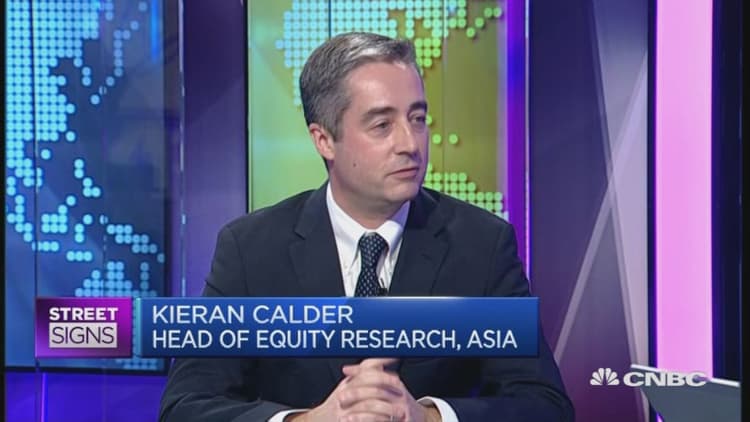Japan's consumer prices fell in March at the fastest pace in three years and household spending declined at the fastest pace in a year, keeping the Bank of Japan under pressure to implement more stimulus to support the economy.
Separate data showed industrial output rose more than expected and labor demand rose to the highest in two decades, but renewed worries about weak private consumption are likely to temper any optimism about the economy.
The BOJ is likely to debate expanding monetary stimulus at a policy meeting ending later on Thursday, as sluggish global demand hurts exports and weak wage growth undermines private consumption, sources have told Reuters.
"Oil prices falls and the waning effect from a weak yen pushed down core CPI," said Hidenobu Tokuda, senior economist at Mizuho Research Institute.
"We expect the BOJ will ease policy today. It will probably be difficult politically for the BOJ to further cut negative interest rates, so we expect the central bank will focus on qualitative easing such as increasing ETF buying."
The core consumer price index (CPI), which includes oil products but excludes volatile fresh food prices, fell 0.3 percent in March from a year earlier, more than the median forecast for a 0.2 percent annual decline.
That marked the fastest decline since April 2013 due to lower prices for gasoline and slowing gains in prices for durable goods and overseas travel.
The core-core CPI, which excludes food and energy, rose 0.7 percent in the year to March, slower than a 0.8 percent annual increase in the previous month.

Household spending in March fell 5.3 percent from a year earlier due to lower spending on clothes, leisure activities and gasoline. That was more than the median estimate for a 4.2 percent annual decline and marked the fastest decline since March 2015.
In one positive sign, industrial production rose 3.6 percent in March from the previous month, compared with a 2.9 percent increase forecast by economists.
The jobs-applicants ratio also rose to 1.30 in March, which shows labour demand is the strongest since December 1991 when the ratio was 1.31.
Any attempts by the BOJ to push down already low yields may anger financial institutions still struggling to adjust to January's negative rates decision.
Cutting the rate on excess reserves from the current minus 0.1 percent or providing funds to banks at a negative rate may thus prove difficult, some analysts say.


